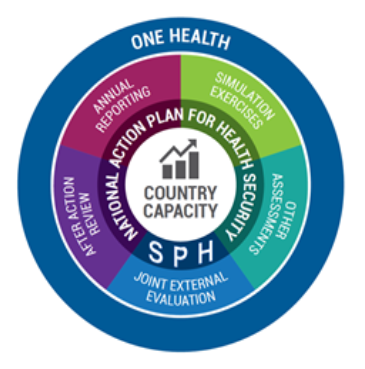The International Health Regulations 2005 (IHR)
Article
|Updated
The International Health Regulations (IHR 2005) are a legally binding instrument aiming to improve countries’ ability to protect and respond to international spread of disease, including epidemics. The Norwegian Institute of Public Health (NIPH) is the national point of contact for the WHO in Norway, and is responsible for implementing capacities of Prevention, Detection and Response to health threats according to the IHR.
The revised version of the International Health Regulations 2005 (IHR) to strengthen global health security came into force in 2007 and was launched by the World Health Organization (WHO). The legally binding regulations are approved by all WHO member states and is aiming to help the international community to prevent, protect against, control, and provide a public health response to the international spread of diseases that have the potential to cross borders and threaten lives worldwide. According to the IHR, Public Health Events of International Concern (PHEIC) are defined as public health risks that constitute a risk to other states and that potentially requires an international response.
Through implementing the IHR, the State Parties have agreed to fulfil certain public health capacities to ensure competent systems to detect, assess and report on public health events, such as functioning surveillance and response systems.
As the IHR requires countries to report information to WHO on certain disease outbreaks and public health events including diseases that can potentially be of international concern and new influenza viruses, all countries are required to establish an IHR national focal point. In Norway, the national focal point is located at NIPH where a national multisectoral IHR-forum is well established and responsible to complement the Norwegian implementation of the regulations.
International Health Regulations Monitoring and Evaluation Framework (IHRMEF)
The main objective of International Health Regulations Monitoring and Evaluation Framework (IHRMEF) is to simplify and stratify the way forward to State Parties in developing their health preparedness. IHR covers communication and obligation between the World Health organisation (WHO) and States Parties. The figure below (from WHO 2018) describes obligations of both. One of these obligations is to comply with the International Health Regulations Monitoring and Evaluation Framework (IHRMEF) which includes a periodic reporting on national capacities of health security preparedness.

After the 2014-2016 Ebola outbreak, the IHRMEF was expanded from a unilateral approach of self-evaluation to a multidisciplinary approach which combines self-evaluation, peer review and voluntary external evaluation.
Currently the IHRMEF consists of four main components: State Party Annual Reporting (SPAR), Joint External Evaluations (JEE), Simulation Exercises (SimEx), After Action Reviews (AAR).
Other IHRMEF’s include National Action Plan for Health Security (NAPHS) and Intra Action review (IAR).
WHO defines NAPHS as a country owned, multi-year, planning process that can accelerate the implementation of IHR core capacities and is based on One Health and whole-of-government approach for all hazards. It aims at fostering national implementation of IHR core capacities.
The Intra Action review (IAR) is not yet categorised as an element of the official IHRMEF; however, it has been widely implemented for mitigation of the ongoing COVID-19 pandemic. For more details:
-
IHR Monitoring and Evaluation Framework (WHO website)
-
3 step strategic framework for national action plan for health security (WHO website)

